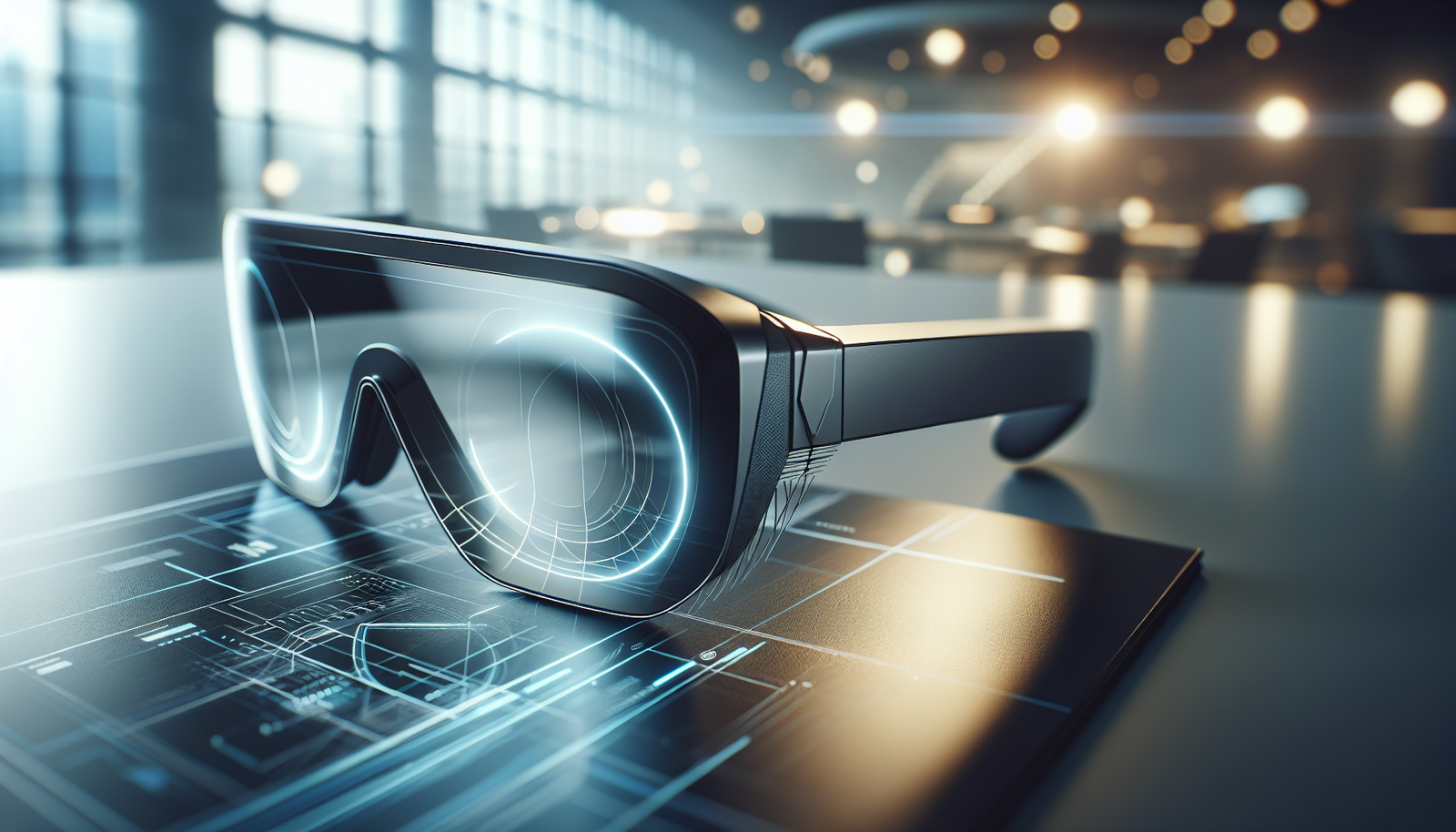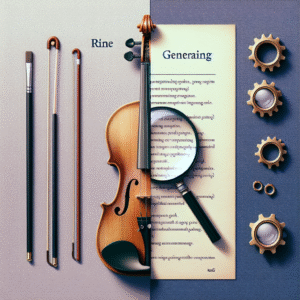What comes to mind when I say “Augmented Reality”? For me, it paints a picture of a world where digital information enhances our physical environment. The fusion of these two realms offers fascinating possibilities—a shift that could redefine how we interact with technology, the world around us, and even each other.
The Fundamentals of Augmented Reality (AR)
Augmented Reality, often abbreviated as AR, blends digital elements into the real world through the use of technology. Unlike Virtual Reality (VR), which immerses users in a completely digital environment, AR overlays images, videos, and sounds onto the real-world views that users experience. I find it incredible how seamlessly these digital features can be integrated into my everyday life.
How Does AR Work?
AR technology typically involves several components, such as cameras, sensors, and software. When I use an AR application, my device’s camera captures the real world, and software then analyzes what it sees. This analysis allows the software to insert digital content in a way that makes it appear as if it exists in the physical world. For example, while using an AR app, I might see a 3D model of a piece of furniture appearing in my living room, allowing me to visualize how it would look before making a purchase.
Components of AR Technology
| Component | Function |
|---|---|
| Camera | Captures the physical environment. |
| Sensors | Detects user interaction and surroundings. |
| Software | Processes information and overlays digital content. |
| Display | Projects the augmented content onto the user’s view. |
The Evolution of Augmented Reality
AR isn’t a new concept; its roots extend back to the 1960s. The first head-mounted display system, known as the “Sword of Damocles,” was developed by Ivan Sutherland. Since then, the technology has undergone significant changes and improvements, making it more accessible and user-friendly.
Key Milestones in AR Development
- 1968: Sword of Damocles – The first AR system, albeit rudimentary, laid the groundwork for future developments.
- 1990s: Virtual Fixtures – Developed for surgical training at the U.S. Air Force, this innovation began blending real and virtual components for practical purposes.
- 2000s: Marker-Based AR – The introduction of marker-based systems allowed images or patterns to trigger digital overlays, which started gaining adoption in advertising and gaming.
- 2016: Pokémon Go – This mobile game significantly popularized AR technology amongst the masses, showcasing its potential for entertainment.
The Current State of AR Technology
Today, I see AR integrated across various industries, from gaming to education, healthcare, and commerce. Popular platforms such as Microsoft’s HoloLens and Google’s ARCore for Android devices signify the technology’s leap into practical, everyday use.
The Applications of Augmented Reality
As I think about how AR is used today, it’s clear that its applications are diverse and continually expanding. Here’s a more in-depth look at some significant sectors where AR is making an impact.
AR in Gaming
Gaming is where I first encountered AR on a wide scale. Games like Pokémon Go have made playing outside more engaging by overlaying digital characters on physical landscapes. I enjoy walking around my neighborhood, looking out for rare Pokémon. This blend of physical exploration with gaming adds a layer of excitement to what I would otherwise consider mundane.
Popular AR Games
| Game Name | Description |
|---|---|
| Pokémon Go | Mobile game allowing players to catch Pokémon in real life. |
| Ingress | A game that pits players against each other in a battle over territory in a real-world setting. |
| Harry Potter: Wizards Unite | An AR game that allows players to explore the wizarding world. |
AR in Education
Education is another field where I see incredible AR potential. With AR, I can view interactive 3D models that illustrate complex concepts in science, history, and art. This immediacy helps me understand material in a more engaging way. For instance, while studying biology, I can examine the anatomy of a heart interactively rather than just relying on diagrams in textbooks.
Examples of AR in Education
| Application | Purpose |
|---|---|
| Google Expeditions | Offers virtual field trips and 3D visuals of historical sites. |
| Anatomy 4D | Provides interactive 3D views of the human body to aid in medical education. |
| Quiver | Combines coloring with AR to create animated stories from children’s drawings. |
AR in Healthcare
In the medical field, AR is a life-saver—literally. Surgeons can use AR glasses to visualize vital information during procedures, enhancing precision and efficiency. I find it remarkable how AR can pull up patient data or overlay imaging results directly onto a surgeon’s field of vision without compromising focus.
Innovations in AR Healthcare
| Application | Purpose |
|---|---|
| HoloLens in Surgery | Provides surgeons with real-time data and images during procedures. |
| Medical Training | Uses AR to simulate surgical procedures or anatomy for training purposes. |
| Patient Education | Helps patients visualize medical conditions and treatment pathways. |
AR in Retail and E-Commerce
In retail, AR is revolutionizing how I shop. I can now visualize how clothes fit or how a particular piece of furniture looks in my home without stepping into a store. This immersive shopping experience makes decision-making much more straightforward and enjoyable.
Examples of AR in Retail
| Brand | AR Application |
|---|---|
| IKEA | IKEA Place allows users to see how furniture fits in their homes. |
| Sephora | Virtual artist lets customers try on makeup products using AR. |
| Adidas | Enables users to virtually try on shoes through their app. |
The Future of Augmented Reality
When I ponder over the future of AR, I’m filled with excitement. It promises to redefine not just technology but society as a whole. As advancements continue, I envision AR moving beyond applications that require a smartphone, becoming more integrated into everyday life.
The Impact of 5G Technology on AR
With the roll-out of 5G technology, the barriers of latency and bandwidth are beginning to dissolve. This enhancement means that AR applications can become even more sophisticated. As a result, I anticipate AR experiences that are seamless, crisp, and incredibly interactive. Whether I’m at a conference, museum, or home, the possibilities are immense.
AR in Social Interaction
As we advance, AR may reshape how I interact socially. Imagine sending an AR postcard where friends can see a 3D model or animation when they point their devices at it. The blending of digital greetings with real-world interactions can create new forms of connection.
AR in Urban Planning
Cities could utilize AR to visualize architectural plans within their environments. As I stroll through an area, I could see digital renderings of new buildings or road layouts projected onto my view. This form of engagement could help residents provide feedback before developments undergo construction.
Ethical Considerations of AR
As exciting as AR is, I find it crucial to consider its ethical implications. Issues surrounding privacy, data collection, and potential misuse of AR technologies need careful contemplation. As AR becomes more prevalent, I must be aware of how my data is used and how it impacts my privacy.
| Ethical Concern | Description |
|---|---|
| Privacy | Increased data collection through AR applications. |
| Misinformation | The potential for manipulated content deceiving users. |
| Access & Equity | Ensuring all individuals have access to AR technology. |
Conclusion
Ultimately, augmented reality is more than just a technological innovation; it is a transformational force poised to change many aspects of my life and society. As I think about what lies ahead, I’m excited about the opportunities this technology will bring. AR has the potential to enhance my everyday experiences, making everything from shopping to education more interactive and meaningful.
I reflect on how this world, where the physical meets the digital, is not far away. As the lines between reality and technology blur, I look forward to immersing myself in enriching experiences that AR will undoubtedly help create. Here’s to a future where augmented reality continues to define my experiences, reshaping how I learn, shop, socialize, and perceive the world around me.






